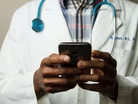Efficient communications can reduce hospital emergencies

Healthcare organisations around the world are facing mounting pressures. When it comes to emergency response times in the UK, patients risk spending as much as 12 hours in A&E, with £1mn being spent every week on private ambulances to fill gaps in services.
“Even for routine treatments, the waiting list has reached a record 7.33mn, with plans to let patients book private healthcare through the NHS app to ease the strain on public services,” says Roni Jamesmeyer, Senior Healthcare Manager at Five9, a software development company. “With tight budgets and high demand, the NHS is becoming increasingly squeezed. The pressure of A&E wait times weighs heavily on healthcare leaders, but could be drastically eased by better communication with patients from the offset.”
Jamesmeyer believes that the industry must look for inspiration from retailers on how to approach today’s patients.
“Proactive communications are proven to boost engagement, regardless of sector,” she says. “If healthcare organisations start to perform regular check-ins with patients, use their data to personalise communications and encourage patients to engage with their health, this will have a direct impact on patient outcomes.”
Managing the hospital discharge process more effectively
One of the key challenges facing the healthcare sector is reducing readmissions.
“There is a direct correlation between patients keeping appointments and being readmitted. For instance, if a patient goes in for a routine operation like a knee replacement, they get discharged with a series of follow-up appointments to check their progress. However, if they develop any new symptoms like signs of an infection or increased pain, they can be more likely to visit A&E.”
Proactive communications can help bridge the gap between routine appointments and urgent care.
“Healthcare organisations can reduce avoidable emergency admissions by addressing patients’ health concerns via the communication channel of their choice - before the situation escalates and the patient visits a hospital.”
By integrating data from electronic health records (EHRs) and care systems into communications, healthcare providers can streamline patient comms and triage care more effectively.
“With regular proactive check-ins based on each patient’s record, healthcare advisors can keep tabs on discharged patients and put their minds at ease, able to move up an appointment or arrange a virtual consultation if any concerns arise,” says Jamesmeyer. “Learning from retail, where brands contact people who have bought a particular product with recommendations based on their spending, healthcare organisations can contact patients who have had a particular procedure or health concern with recommendations based on their care plan.”
Ultimately, managing discharged patients with proactive aftercare communications can reduce the number of people visiting hospitals.
Roni Jamesmeyer, Senior Healthcare Manager at Five9
Keeping hospital patients engaged in care
Proactive comms goes far beyond reducing readmissions - it serves as an effective tool to get people engaged with their healthcare system and reduce pressure on A&E altogether.
“One of the key challenges is that people can lack interest and incentive, or let health issues progress until they are critical before taking action,” says Jamesmeyer. “With AI-powered proactive outreach and personalised communications, the NHS can get patients more engaged in their own care. Looking to retail as a shining example of boosting customer engagement, healthcare institutions need to look at how they can personalise their communications and meet patients where they are.”
It can be as simple as a text checking in on a patient's mental health and reminding them of an appointment, an automated email reminding someone that their routine flu jab is coming up, or a DM linking to new diet and fitness advice.
“Keeping patients informed, scheduling or rescheduling appointments, and managing repeat prescriptions can all become more efficient through the use of proactive comms. AI is vital to keep the lines of communication open when healthcare staff are overstretched, delivering proactive comms that help to keep patients out of A&E.”
Avoiding costly emergency situations
Proactive comms also play a major role in reducing emergency scenarios. Often, people call emergency services in non-emergency situations, yet almost one in five callers give up before they get through to receive medical advice or treatment.
“The result - non-emergency enquiries turn into unnecessary hospital visits or ambulance callouts,” says Jamesmeyer. “Through the use of proactive communications, healthcare organisations can identify potentially life-threatening problems sooner. This means earlier diagnosis and treatment, referrals to outpatient and remote settings and reduced urgent healthcare requirements. When patients need answers on non-urgent matters and symptoms, healthcare organisations must scale to handle interactions and be transparent on wait times to keep patients on the line. With AI and IVAs, patients can be updated regularly on their position in the queue and receive a callback or notification when they are next in line, reducing frustration and the likelihood of hanging up. People are more compliant when they are kept informed.”
IVAs also facilitate more efficient triage, with patients routed to the right care provider for their situation. Taking pressure off doctors and GPs, other healthcare professionals like nurses can advise patients on treatment and next steps, and patients can feel more comfortable and encouraged to reach out about a ‘smaller’ issue in the future, rather than ignoring it.
“Proactive communications will be the key to reducing pressure on urgent healthcare services,” says Jamesmeyer. “The NHS must learn from retail successes, personalising interactions and keeping health at the front of patients’ minds. From checking in on them after hospital discharge, to keeping patients engaged with their care, to spotting potentially life-threatening issues before they become emergencies, being proactive is crucial to ensuring patients receive the right care, without delay.”



